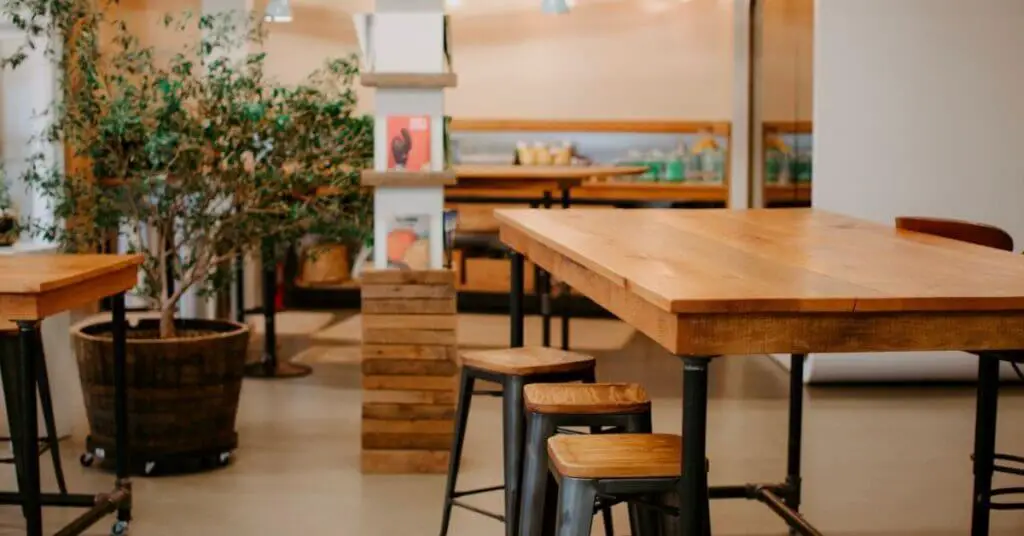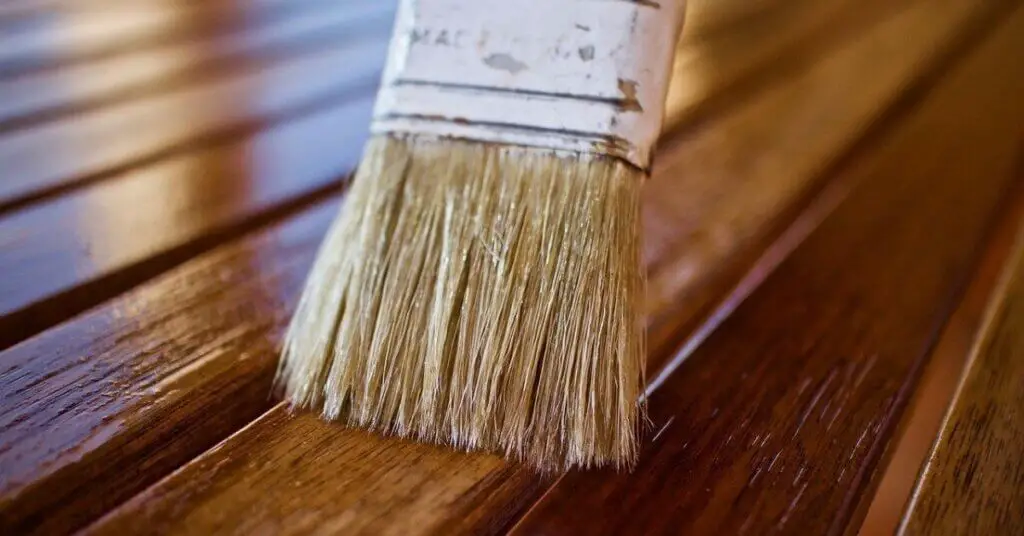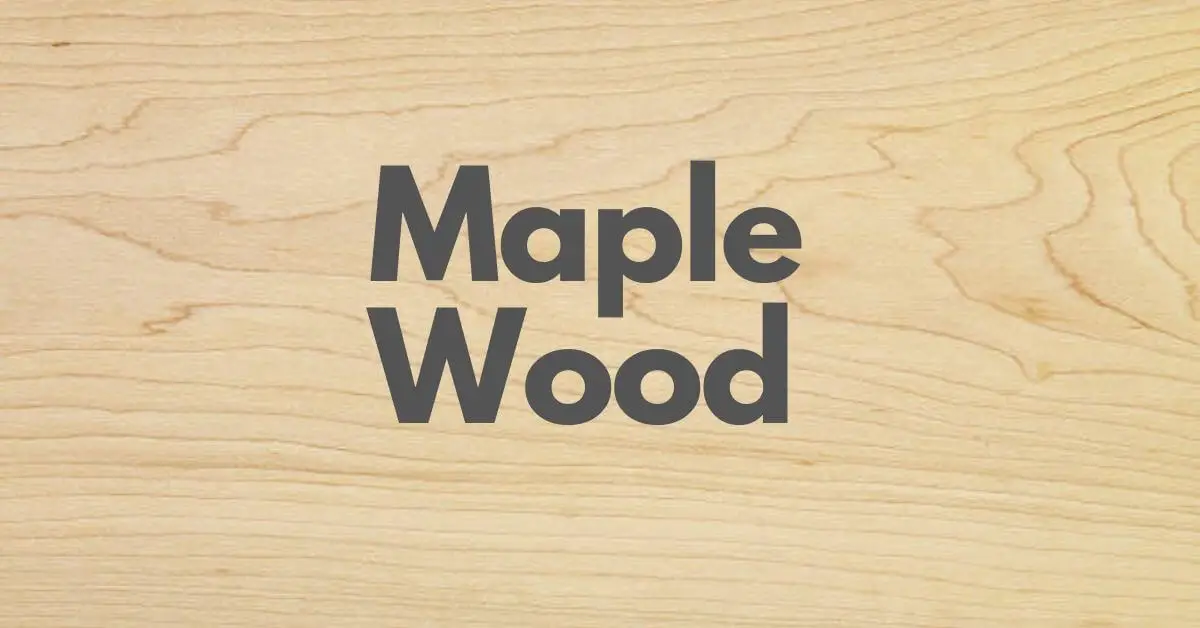Maple is a creamy white hardwood from a deciduous tree that sheds its leaves each autumn. Maple is not naturally rot-resistant, So it is not suitable for outdoor applications, but it is one of the popular woods for interior use. It is commonly used for quality flooring, furniture, plywood, and veneer sheets.
Maple is hard, heavy, and stable wood. It is prized for its creamy color, smooth grain pattern, and impressive durability.
There are approximately 132 species of maple trees and scrub(some scrub are less than 10m tall ), most native to Asia. The remaining species belong to Europe, northern Africa, and North America.
The physical properties of each maple species differ, such as hardness, stability, and price. We can quickly identify them by color and grain pattern.
Maple is a small to medium-sized tree. Some species of Maple are famous for lumber, while some are known as shady trees. Maple trees can have rounded or oval-shaped crowns.
| # | Maple Wood |
| Scientific name | Acer |
| Tree Height | 80-115 ft (25-35 m) tall, 2-3 ft (.6-1.0 m) trunk diameter |
| Wood color | Creamy to Dark reddish brown |
| Rot-resistance | Medium decay resistance |
| Workability | Easy to work |
| Finishing | Difficult to finish |
| Type | Hardwood |
| Uses | Flooring, veneer, paper, musical instruments, cutting boards, baseball bat, and decorative items. |
Common Uses of Maple Wood
Maple wood, renowned for its versatility and durability, is used in various applications. Its primarily used for flooring. It adds to the beauty and value of the home. It’s a tough wood that can withstand decades of wear and tear.
Because maple wood is strong and durable, it is one of the most popular types of wood for interior furniture. Moreover, maple wood possesses a smooth and fine grain, contributing to its aesthetic appeal. The wood’s pale, light color provides versatile finishes, ranging from natural and clear stains to darker tones, making it adaptable to various design preferences and interior styles.

The resonance and tonal qualities of maple make it an exceptional material for the construction of musical instruments such as violins, violas, cellos, and basses, contributing to the rich timbre and craftsmanship of these instruments.
Maple wood is ideal for making durable tools, handles, cutting boards and butcher blocks.
Maple Wood Color
The color of the heartwood ranges from creamy white to dark reddish brown, while the color of the sapwood is almost white or sometimes reddish or golden. There are many species of maple, however, so the color of each species may vary slightly from one another.
Like most hardwoods, maple wood darkens over time and turns a deep golden honey color. The light brown color of the maple wood will gradually change to a darker color over 8 to 12 months.
The process of color change occurs rapidly due to constant exposure to sunlight and oxygen.
How do you preserve the natural color of Maple Wood?
If you want to prevent the Maple wood from changing color over time, you should apply one to two coats of clear finish. A great way to prevent wood from changing color. The clear finish acts as a protective layer and provides long lasting natural color.
Maple Wood Advantages and Disadvantages
Advantages
- Maple wood is available at an affordable price.
- Maple wood has a great appearance.
- Maple is a strong and durable wood.
- It requires low care and maintenance.
Disadvantages
- Maple wood is not rot-resistant and non-durable.
- Maple wood is prone to scratches and marks.
- It is difficult to stain.
- The wood color fades over time.
Working with Maple Wood
Generally, they are easy to work with both hand and power tools. Maple is very hard and dense. So, it may be difficult for a beginner to work with. So, when you work with maple or any other hardwood, keep your tools, blades, and bits sharp.
Maple wood is challenging but can be carved and shaped with the right tools. It holds nails and screws well, glues, and finishes nicely.

How to Stain Maple Wood?
Maple wood is not easy to stain. Staining Maple wood can cause blotches of stain. This is a common problem that occurs in many kinds of wood. The main reason for “spotty or blotches” patches is that the stain doesn’t get to fill the pores properly, while some do fill in properly.
In other words, the grains of maple wood are not uniform. Some areas accept the stain while others resist the stain completely, resulting in patchy stains.
There are some important steps to get rid of blotchy problems, which should be followed before starting to stain.
- Step 1: In the first step, do light sanding; it will open the pores and make them uniform. Start with 120 grit and go up to 220. Sanding also removes minor dents and scratches.
- Step 2: Do not apply sanding in one place for a long time; apply it uniformly on the entire surface.
- Step 3: After two coats of a pre-stain conditioner, you can apply your stain of choice to the maple wood. After the whole stain process is completed, let the wood dry thoroughly.
Complete the staining process in a dust-free area to get a smooth and shiny finish.
Is Maple Wood Rot-Resistance?
Maple hardwood is not rot-resistant and is also susceptible to insect attack. It is not a good idea if you want to use maple as outdoor furniture. Although some hardwoods do well in outdoor environments, not all hardwoods do.
Some wood’s heartwood (center wood of trees) contains extractives that protect the wood from external elements. Extractives are the mixer of oils, resins, tannins, and polyphenols.
While some wood has tyloses, Which protect heartwood from decay. Wood can be made suitable for outdoor purposes by specific treatments. But these methods do not work for a long time. Maple is a beautiful wood. It would be a better idea to use it for indoor furniture.
Is Maple a Hard Wood?
Yes, Maple is a hard wood with relatively higher compressive strength than most woods. The Janka hardness of maple wood depends on its species.
Janka Hardness is a test to measure the hardness of wood. To calculate the Janka Hardness of any wood, It measures the force required to embed an 11.28-millimeter-diameter solid steel ball halfway into a sample of wood.
The Janka hardness values of some woods are as follows.
| Wood Name | Janka Hardness Value – lbf |
| European Cherry | 1,150 |
| Oregon ash | 1,160 |
| Koa | 1,170 |
| Black Maple | 1,180 |
| Hard Maple | 1,450 |
| Water Oak | 1,190 |
| Green Ash | 1,200 |
| Rosewood | 1,210 |
Is Maple Wood Good for Cooking?
Maple is an affordable hardwood; it is an excellent choice for cooking. Maple gives a sweet flavor to your food. Also, It burns clean and consistently.
Most Hardwoods are always an excellent choice for cooking because they add better flavor to meat and burn more efficiently over a longer time.
For better and hassle-free cooking, it is necessary to have the proper moisture in the wood and the right side of the wood.
Avoid softwood for cooking because it burns quickly and does not generate enough heat.
According to experts, wood for cooking should be 2-3 inches square, 18-24 inches long, and the wood should have less than 20% moisture.
Can You Burn Maple Wood in a Fireplace?
Maple wood is a great choice for firewood after properly seasoned. The BTU value of Hard Maple wood is 25 Heat per Cord (Million BTUs). This high BTU value is responsible for generating high heat.
But to get this better experience, it is necessary to choose the correct species of maple. Maple can be divided into two parts. Hard maple and soft maple.
Hard maple performs well because Hard maple is generally harder than soft maple. But that doesn’t mean soft maples are the softest. Soft maples can be harder than many other hardwood species.
You can compare the BTU value of maple and other wood in the table given below.
| Wood Species | Weight (lbs./ Cord) Green | Heat per Cord (Million BTUs) |
| Locust, Black | 4616 | 27.9 |
| Maple, Other | 4685 | 25.5 |
| Maple, Silver | 3904 | 19.0 |
| Mulberry | 4712 | 25.8 |
Types of Maple
Red Maple (Acer rubrum)
Red Maple is a medium-hard, strong, and durable hardwood. This Red maple got its name due to the red color of its flowers, twigs, seeds, and autumn leaves.
The heartwood is darker reddish brown, and the sapwood is white to a light golden or reddish brown. The wood of an older red maple tree may have curly or quilted grain patterns.
It is a large-sized (65-100 ft (30 m) tall, 2-3 ft (.6-1 m) trunk diameter), a deciduous tree native to Eastern North America.
Rot Resistance: Red maple wood is not rot-resistant and is moderate-durable regarding decay resistance.
Hardness: The Red Maple medium Janka hardness value is 950 lbf (4,230 N).
Workability: Generally easy to work with both hand and power tools. Due to its high density, wood tends to burn when machined with high-speed cutters. Turns glues and finishes nicely.
Uses: Veneer, paper (pulpwood), boxes, crates/pallets, musical instruments, turned objects, and other small specialty wood items.
Silver Maple (Acer saccharinum)
Silver maple is a soft wood. That’s why silver maple is counted in the group of soft maple. Silver maple is also known as creek maple, Silverleaf maple, large maple, water maple, swamp maple, or white maple.
The color of the heartwood is darker reddish brown, and the sapwood is white. Growth rings may be present in the wood. Usually, wood has a straight grain but may be wavy.
Silver maple is a large-sized, fast-growing deciduous tree. The tree can be up to 80–115 ft (25–35 m) tall and 2–3 ft (.6–1.0 m) trunk diameter. It is native to the Northeastern United States.
Rot Resistance: Silver maple is not rot-resistant or durable for outdoor applications.
Hardness: Its Janka hardness value is 700 lbf (3,110 N).
Workability: Due to its low density, it can be easy to work with hand and power tools. Turns glues and finishes nicely. It might be a problem to stain; blotches can occur when staining.
Uses: Furniture, cabinets, veneer, pulp, boxes, crates, flooring, making paper, and can be used for firewood.
Black Maple (Acer Nigrum)
Black maple wood is hard, stable, and affordable hardwood. It is considered to be in the grouping of hard maples. Black maple is also known as black sugar maple.
The color of the heartwood is light yellowish brown, and the sapwood is nearly white. The growth rings tend to be slightly darker.
Black Maple is a large-sized, fast-growing deciduous tree. The tree height can be up to 80–115 ft (25–35 m) and 2–3 ft (.6–1.0 m) trunk diameter. Black Maple is native to the Northeastern United States.
Rot Resistance: Black maple is non-durable to perishable in regard to decay resistance.
Hardness: Its value on the Janka hardness scale is 1,180 lbf (5,250 N).
Workability: It is generally easier to work with hand and machine tools. However. But there may be problems with blotches and unevenness during staining.
Uses: Flooring, veneer, paper, musical instruments, cutting boards, butcher blocks, workbenches, baseball bats, and other turned wood items.
Bigleaf Maple (Acer macrophyllum)
Bigleaf maple is one of the famous maple species. It is moderately durable and strong. Bigleaf maple is widely used for wood carving.
It is also known as Oregon maple. The bigleaf maple gets its name from the large leaves, 6 to 12 inches (15-30 cm) in size. The color of the heartwood is dark reddish brown, and the sapwood is nearly white, to a reddish or golden hue.
Black Maple is a small-sized tree. The tree height can be up to 50–65 ft (15–20 m) tall and 2–3 ft (.6–1.0 m) trunk diameter. Bigleaf Maple is native to the Coastal regions of Pacific North America.
Rot Resistance: Bigleaf maple is not durable when used for outdoor applications and is also susceptible to insect attack.
Hardness: Its value on the Janka hardness scale is 850 lbf (3,780 N).
Workability: Easy to work with all types of machines and tools. But do not use a blunt blade otherwise wood has a high tendency to burn and smell. There may be problems with blotches during staining.
Uses: Veneer, paper industry, boxes, crates, musical instruments, turned objects, and other small decorative wooden items.
Sycamore Maple (Acer pseudoplatanus)
Sycamore maple is straight-grained, fine, and even texture hardwood. It is also called a European sycamore.
The color of the heartwood is dark to light reddish brown, while the sapwood is nearly white to a light golden or reddish brown.
Sycamore maple is a large, deciduous, broad-leaved tree native to Europe and southwestern Asia. The tree height can be up to 80-115 ft (25-35 m) tall, 3-4 ft (1.0-1.2 m) trunk diameter.
Rot Resistance: Sycamore maple wood is rated as non-durable and is also susceptible to insect attack.
Hardness: Its value on the Janka hardness scale is 1,050 lbf (4,680 N).
Workability: Easy to work with tools. Due to the high density, the wood has a tendency to burn when machined at high-speed. You should use a Pre-Stain Wood conditioner to avoid blotches and stain results.
Uses: Furniture, plywood, paper, boxes, crates, musical instruments, turned objects, and other small specialty wood items.
Field Maple (Acer Campestre)
Field maple is strong, moderately durable, and affordable hardwood. It is also known as hedge maple. It is widely used for making indoor furniture.
The color of the heartwood is dark reddish brown, and the sapwood is nearly white to off-white cream. It has a straight grain but may be wavy with a uniform texture.
Field maple is a small deciduous tree that can be up to 49–82 ft (15–25 m) tall, 1-2 ft (.3-.6 m) trunk diameter.
Rot Resistance: Field maple wood is not rot-resistant and non-durable to perishable in regard to decay resistance.
Hardness: Its value on the Janka hardness scale is 1,150 lbf (5,110 N)*.
Workability: Usually, Field maple is easy to work with both hand and machine tools. But its density is higher than soft maple, So it is difficult to work with small tools.
Uses: Flooring, furniture, musical instruments, and parts, turned objects, and veneer.

